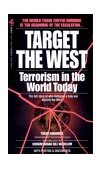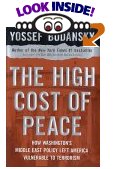|
| Home | About Kashmir Herald | |
Volume 4, No. 6 - December 2004 - January 2005 |
|
| Featured Article |
|
|
|
2004: Qualified Gains against Terror K. P. S. GILL President, Institute for Conflict Management The sum of insurgent and terrorist violence in South Asia - measured in terms of fatalities - remained roughly constant across the years 2003 and 2004, though the secular decline that has been witnessed over the past three years was nominally maintained. According to available data, 6,584 persons lost their lives to terrorism and insurgency in 2004, as against 6,577 in 2003 (the actual numbers may, indeed, be higher, since a media clampdown on reportage in areas of conflict in Bangladesh, Nepal and Pakistan makes information flows from these countries particularly unreliable). This apparent statistical 'stability', however, masks radical transformations, both across the region and in patterns of violence within the countries that comprise it. Crucially, total fatalities saw a dramatic fall in India, from 4,171 in 2003, down to 2,897 in 2004, with the most significant decline in the State of Jammu & Kashmir (J&K, 2004: 1810; 2003: 2542). Declines in total fatalities were also witnessed in the Indian States of Assam (2004: 354; 2003: 505); Tripura (2004: 167; 2003: 295); Meghalaya (2004: 35; 2003: 58); and in the widespread Left Wing extremism which now registers a presence in as many as 13 States (2004: 259; 2003: 539). Marginal increases were, however, registered in Manipur (2004: 214; 2003: 198) and in Nagaland (2004: 58; 2003: 37). It is the 'blowback' in Pakistan and Bangladesh that accounts for the most significant escalation in the region, and it is developments in these two countries - as well as largely unrelated events in Nepal - that have ensured that South Asia remains one of the world's most volatile regions of the world. In Pakistan, total fatalities in terrorism-related violence rose to 878 in 2004, from 154 the previous year. Bangladesh saw a rise from 88 to 249 over the same period. Clearly, states that have sought strategic gains in the terrorist enterprise are finding the undertaking increasingly unprofitable, though it is far from clear that they have the power, the capacity or the intent to put the genie back in the bottle. As far as Pakistan is concerned, both the North West Frontier Province [NWFP; the Federally Administrated Tribal Areas (FATA) alone have seen at least 595 killed] and Balochistan (at least 103 killed) have spun progressively out of control, though sectarian violence has also been high in Sindh; political disturbances have been noticeable, with a number of persons killed and arrested in the Northern Areas; and sectarian violence has also penetrated the hitherto untouched Punjab province, Pakistan's power-centre. The rumblings of a new source of dissent, the Seraikis of South Punjab, have also been more audible, and if instability continues to mount in the country, this could well be another locus of dissident violence and state repression in the foreseeable future. With both the Maoists (the Communist Party of Nepal - Maoist, CPN-M) and the state Forces dramatically escalating violence after the breakdown of the ceasefire and the 'peace negotiations' in August 2003, year 2004 registered an increase in total fatalities in Nepal as well (2004: 2451; 2003: 2105). And despite the three year long peace process in Sri Lanka, there are growing signs of deterioration and apprehensions that the mediated peace may not be sustainable. As many as 109 persons have been killed under the present 'ceasefire' in 2004 [primarily political assassinations executed by the Liberation Tigers of Tamil Eelam (LTTE) and the internecine conflict with the break-away 'Karuna' faction], as against 59 in 2003 and just 15 in 2002. The numbers alone, however, do not communicate an accurate picture of the scale and scope of instability and violence in South Asia. The geographical spread and extension [MAP] of movements of radical violence - even in theatres where total fatalities have shown a decline - is among the most disturbing facets of the situation in this troubled region. As the 'Conflict Map' of South Asia indicates, perhaps more than half the geographical expanse of this region has, today, passed over into areas of present or potential insurgent and terrorist conflict, and the trajectory of the past year has demonstrated a rapid augmentation of afflicted territories. Crucially, while no area affected by such extremist movements in 2003 actually 'fell off' the conflict map in 2004 - that is, no major conflict in the region was 'resolved' - large territories have been added to the regions of disorder. Nevertheless, the initiation or
persistence of a number of processes of negotiation with terrorist and insurgent
groups through 2004 was responsible for some - though in many cases, possibly
temporary - relief. Circumstances emerging from the qualified Indo-Pak détente
have made the erection of an effective fence along the Line of Control and
international border in J&K possible, and this, along with the increasing
difficulty of maintaining 'deniability' on Pakistan's support to terrorism, has
been the primary factor that has resulted in the very significant declines in
fatalities in J&K. According to the Union Minister for Home Affairs,
infiltration in the State had declined by as much as 60 per cent during the
year. Parliamentary elections were also held in the State between April 20 and
May 2004, and were marred by a campaign of terrorist intimidation and violence
to impose a boycott. A total of 31 persons were killed during the four phases of
polling, and there were as many as 109 incidents of terrorist violence across
the State during this period. Despite the campaign of terror, intended to
discredit the elections, a voter turnout of 35.11 per cent was registered in the
State. The Manmohan Singh Government, which assumed power at the Centre on May
22, 2004, continued efforts to push forward a dialogue with separatist elements
in J&K, but the All Parties Hurriyat Conference (APHC) and the splinter group
headed by hardliner Syed Ali Shah Geelani, the Tehreek-e-Hurriyat, have refused
to come to the table. Pakistan has also made significant efforts to forge unity
between the Hurriyat factions to strengthen its own position in the dialogue
with India, but has also failed to secure its end. COURTESY: South Asia Terrorism Portal |
 |
 |
 |
|
|
Archives
| Privacy Policy |
Copyrights
|
Contact
Us | |
||